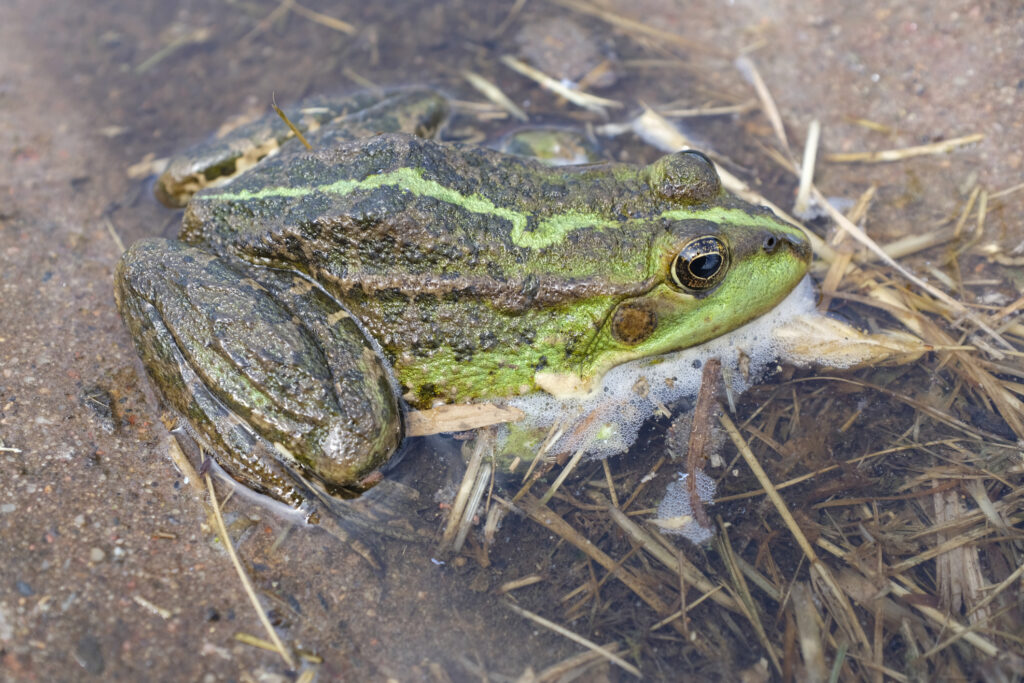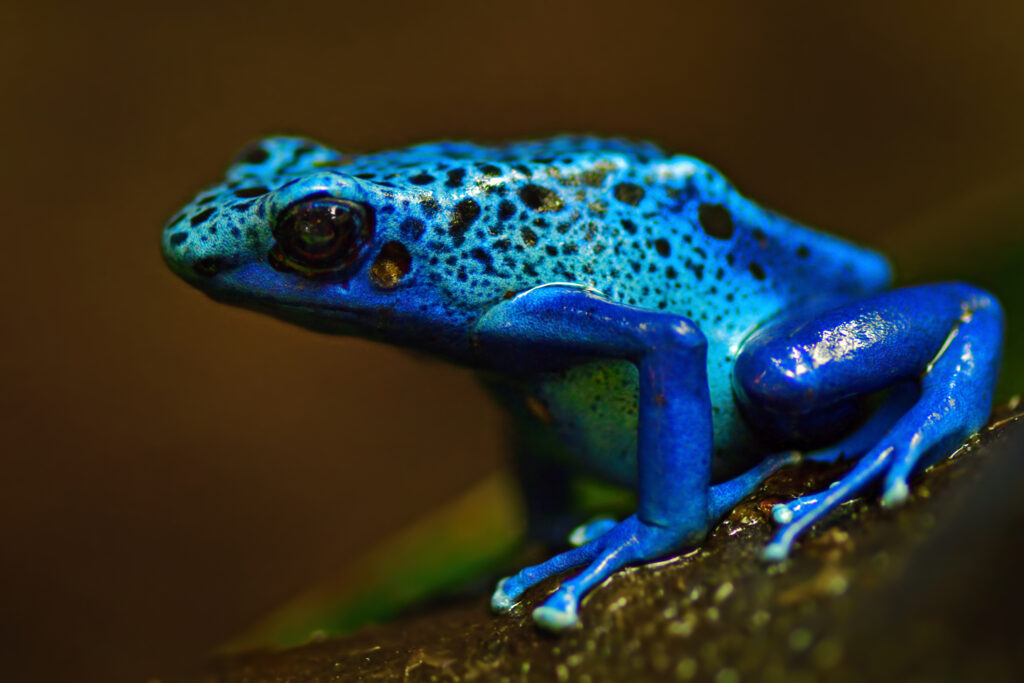With their webbed feet and slimy skin, frogs are already an interesting species. But what makes them even more fascinating is how long these amphibians have survived on Earth. So, exactly how many years have they been around and how have they adapted over time to survive in different conditions? Let’s hop to it!
What is a frog?
Belonging to the Chordata phylum as part of the Anura order, which includes toads, frogs are cold-blooded, short-bodied, tailless amphibians which can be found all over the world in water and land habitats. The only place you won’t find them is Antarctica!
They generally have large, protruding eyes, moist skin, non-existent necks and powerful back legs to help them jump long distances. Frogs can come in all sizes and colours, often depending on their surrounding environments.
How long have frogs been around?
Frogs have been around for a really long time, with records dating back over 200 million years. That means they were on Earth with the dinosaurs and have even survived a few mass extinctions.
So, does this mean that frogs are classified as dinosaurs? The answer is no. Frogs aren’t descendants of any dinosaur species and have no known relations with these prehistoric creatures, despite being around at the same time.
How have frogs evolved over the years?
Over their many years on Earth, frogs have adapted and evolved to survive in different habitat conditions and get enough food to thrive. Although they may have been around for more than 200 million years, frog populations are thought to have grown substantially after the dinosaurs became extinct 66 million years ago.
The simple explanation of this is that after the dinosaurs were wiped out, frogs diversified to fill gaps in the ecosystems. Before this event, for instance, frogs hadn’t adapted to live in trees. This, combined with their diverse range of colours, helps them protect themselves from predators and other dangers, allowing them to survive longer. They also have varied diets, which means they can thrive in different habitats.

How many species of frogs are there?
Scientists have discovered more than 5,000 species of frogs currently living on Earth.
This group includes the prehistoric goliath frog that once lived among dinosaurs and is still around today but is at risk of extinction, the Argentine horned frog and the marsh frog. In fact, horned frog species are direct descendants of the prehistoric beelzebufo frog species.
All about the beelzebufo: The largest frog to ever live
Meet the largest frog to ever live – the beelzebufo! Thought to have gone extinct in the Late Cretaceous period, these giant frogs give us an insight into what these amphibians were like tens of millions of years ago and help us see how the different species have evolved.
Would we be able to add in a pronunciation guide here? E.g. “pronounced bee-el-zeh-BOOF-oh”
Let’s delve into their appearance, size, diet and much more with our fact file on the beelzebufo…
What was the beelzebufo?
Nicknamed the ‘devil frog’ and with the scientific name of Beelzebufo ampinga, this species lived around 67 million years ago in the prehistoric age. It might not be the oldest known frog species, but its unique size is enough of a reason to still research it to this day. It was officially named by scientists in 2008, although the first fossilised remains were discovered more than a decade before.
What did the beelzebufo look like?
The beelzebufo had a wide mouth and a powerful jaw to help with its carnivorous diet, consisting of lizards, small vertebrates, and maybe even hatchling dinosaurs. The species also had a thick skull and four huge legs. These are thought to have helped this ambush predator attack much larger prey, alongside a mighty bite force of around 4.5 kilograms.
How big was the beelzebufo?
The beelzebufo is reported to be one of the largest frogs that have ever lived, growing up to 16 inches – the size of a beachball or even a small dog!
Where did the beelzebufo live?
Records show that this species inhabited the island of Madagascar just off the coast of Eastern Africa during the Late Cretaceous period. It’s thought that a land connection between South America, Madagascar, and possibly Antarctica could have existed as late as 65 to 70 million years ago, which would explain why the closest relatives of the beelzebufo are now only found in South America.
Change to: Records show that this species inhabited the island now known as Madagascar, just off the coast of Eastern Africa, during the Late Cretaceous period.
3 tips to help protect and conserve frogs

So, how can we keep frog population numbers up and protect this group of amphibians for the future? Here are some of our simple conservation suggestions for how to help frogs:
- Build habitats: Whether you build a pond in your garden or build up rocks and leaves to give them a place to shelter, creating spaces in the wild or in your garden can help them rest and stay safe from danger.
- Drive carefully: Frogs can sometimes find themselves near roads, especially in the countryside. Make sure to look out for any creatures as you’re driving around and take corners or bends slowly to avoid injuring anything.
- Conserve water: Making an effort to use less water can help preserve many of the environments that frogs call home.Taking shorter showers, switching off the tap when brushing your teethand collecting rainwater in a bucket to water plants can all help the cause.
With our conservation efforts, we hope that frogs can thrive for many more years to come. For more insights and tips on protecting species and habits for the future, check out our blog.
